
Kód: 09028211
Public Natures
Autor Marion Weiss, Michael A Manfredi
Authors' Statement Larger than life but part of it, infrastructure has an immediate presence; it shapes our environment and urban life in vital, authentic and often messy ways. The very nature of infrastructure suggests continuity ... celý popis
- Jazyk:
 Angličtina
Angličtina - Väzba: Pevná
- Počet strán: 304
Nakladateľ: Princeton Architectural Press, 2015
- Viac informácií o knihe

65.21 €
Dostupnosť:
50 % šanca Máme informáciu, že by titul mohol byť dostupný. Na základe vašej objednávky sa ho pokúsime do 6 týždňov zabezpečiť.
Máme informáciu, že by titul mohol byť dostupný. Na základe vašej objednávky sa ho pokúsime do 6 týždňov zabezpečiť.Prehľadáme celý svet
Mohlo by sa vám tiež páčiť
-

Black Shadow - Chapter Two
12.43 € -

Ordinary Person, An Extraordinary Gift
39.02 € -

Born of Sin
22.24 € -

Equitable Cultural Tourism Handbook
131.85 € -
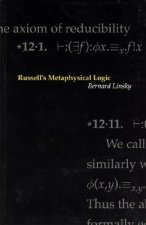
Russell's Metaphysical Logic
31.44 € -

Pip and Posy: The Scary Monster
7.17 € -24 % -

With Every Breath
15.36 € -5 %
Darujte túto knihu ešte dnes
- Objednajte knihu a vyberte Zaslať ako darček.
- Obratom obdržíte darovací poukaz na knihu, ktorý môžete ihneď odovzdať obdarovanému.
- Knihu zašleme na adresu obdarovaného, o nič sa nestaráte.
Informovať o naskladnení knihy
Zadajte do formulára e-mailovú adresu a akonáhle knihu naskladníme, zašleme vám o tom správu. Postrážime všetko za vás.
Viac informácií o knihe Public Natures
Nákupom získate 163 bodov
 Anotácia knihy
Anotácia knihy
Authors' Statement Larger than life but part of it, infrastructure has an immediate presence; it shapes our environment and urban life in vital, authentic and often messy ways. The very nature of infrastructure suggests continuity and connection, yet the physical manifestation of infrastructure also has the capacity to sever communities and unravel the increasingly fragmented fabric of our metropolitan world. If infrastructure can be defined as the basic physical and organisational structure needed for the operation of a society or enterprise, then rail and subway lines, distribution grids, water ways, communications rights-of-way, highways, bridges, on and off ramps, are all elements of our constructed landscape that are as pressing as the cultural institutions that typically attract the attention of designers and the general public. We look at the physical elements of infrastructure and the often marginalized sites they occupy as potential contributions to a meaningful public realm. We focus our attention on the interstitial spaces that transform and reconnect disparate enclaves across the metropolis. Complementing the proposed reinvigoration of the infrastructural project proper, we also seek to expand the domain of infrastructure to encompass its latent qualities as an armature for social and cultural practices--its "public natures." Toward these ends, the case of the campus and the research institution offers a compelling venue to test the evolution of the infrastructural project in the spatial, social, and technological registers. In contrast to the open-ended movement and continuities associated with infrastructure, institutions have traditionally been characterised by the clarity of their boundaries, with finite internal infrastructures designed to support their distinct requirements. However, the expanding scale and definition of the campus and the proliferation of research institutions in cities po e new opportunities and challenges for infrastructural thinking. Herein lies the potential for activating buildings so that they perform not as static groupings of forms, but as ecologies of pieces which intersect and overlap with neighboring urban ecologies. What if a new paradigm for infrastructure existed? We imagine a definition that is both projective and pragmatic--a prototypical ideal might be described as an Evolutionary Infrastructure--intrinsically agile, capable of optimising the performance of static institutions and leveraging the stray spatial consequences of pre-existing infrastructures. Public Natures: Evolutionary Infrastructures suggests new obligations and opportunities for infrastructure, a doubling of responsibilities that tasks traditional mono-functional infrastructures with new public and ecological imperatives, and obligated urban institutions to create buildings that are effected by and affect infrastructures with new academic and cultural imperatives. This dual definition --of infrastructure bent towards public life, and buildings inflected to include more infrastructural dimensions --is especially relevant to urban centers and academic institutions that have experienced great transformation over time. At stake is the intrinsic tension between cities as places of exchange and movement, and institutions obligated to convey legible boundaries between what belongs to the institution and what is separate. We are interested in the capacity of these infrastructural elements to do more work, to leverage their very physical presence to support a broader range of ecological, institutional, and cultural imperatives. For us, the allure of this new public territory lies in the range of scales and hybrid opportunities it affords. Our idea of an evolutionary infrastructure doesn't condemn existing artifacts of infrastructure or depend on a tabula rasa utopian condition, but rather envisions new reciprocities between pre-existing infrastructural systems and more ecologically resilient territories for public life.
 Parametre knihy
Parametre knihy
Zaradenie knihy Knihy po anglicky The arts Architecture Architectural structure & design
65.21 €
- Celý názov: Public Natures
- Podnázov: Evolutionary Infrastructures
- Autor: Marion Weiss, Michael A Manfredi
- Jazyk:
 Angličtina
Angličtina - Väzba: Pevná
- Počet strán: 304
- EAN: 9781616893774
- ISBN: 161689377X
- ID: 09028211
- Nakladateľ: Princeton Architectural Press
- Hmotnosť: 1504 g
- Rozmery: 252 × 200 × 35 mm
- Dátum vydania: 08. September 2015
Obľúbené z iného súdka
-

Architectural Styles
21.73 € -23 % -

Conditional Design
13.84 € -

Detail in Contemporary Residential Architecture 2
48.43 € -23 % -
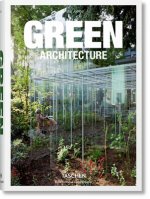
Green Architecture
21.73 € -23 % -

BIG. Yes is More. An Archicomic on Architectural Evolution
26.08 € -15 % -

Fast Guide to Architectural Form
16.67 € -8 % -
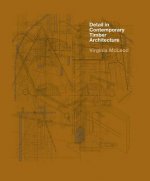
Detail in Contemporary Timber Architecture (paperback)
32.35 € -23 % -
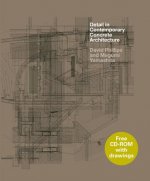
Detail in Contemporary Concrete Architecture
40.84 € -19 % -

Detail in Contemporary Glass Architecture
53.68 € -23 % -
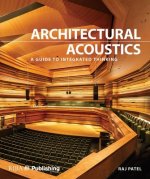
Architectural Acoustics
79.57 € -

Small Eco Houses
29.82 € -16 % -

Cabin Porn
14.05 € -16 % -
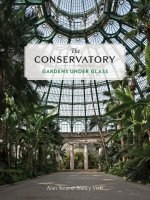
Conservatory
49.44 € -17 % -

Skyscrapers
31.64 € -9 % -

How to Read Buildings
14.85 € -20 % -

Earthen Floors
28.91 € -18 % -
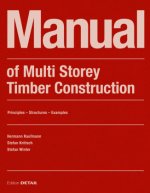
Manual of Multistorey Timber Construction
111.52 € -4 % -

Clay and lime renders, plasters and paints
35.89 € -12 % -
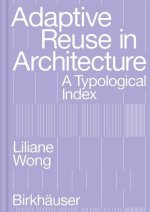
Adaptive Reuse in Architecture
65.62 € -9 % -

Berlin - The Architecture Guide
30.73 € -5 % -

Contemporary Concrete Buildings
20.92 € -19 % -

Builders of the Pacific Coast
27.70 € -17 % -

Complete SketchUp Companion for Interior Design
107.78 € -
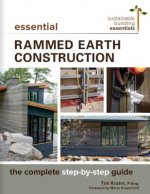
Essential Rammed Earth Construction
42.06 € -16 % -

Where Architects Sleep
20.52 € -17 % -
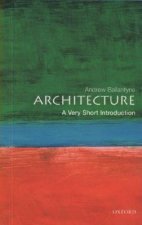
Architecture: A Very Short Introduction
10 € -22 % -

Building with Cob
35.79 € -12 % -
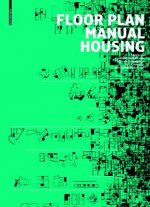
Floor Plan Manual Housing
58.44 € -18 % -

Pattern and Ornament in the Arts of India
24.56 € -13 % -

Passive House Details
65.01 € -

Manual of Recycling
133.06 € -4 % -

Parametric Design for Architecture
37.91 € -17 % -

Canon of the Five Orders of Architecture
13.34 € -5 % -

Introduction to Architectural Science
67.23 € -

Design Drawing, Third Edition
66.93 € -
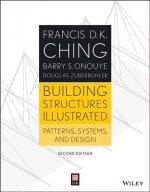
Building Structures Illustrated - Patterns, Systems, and Design, Second Edition
57.02 € -2 % -
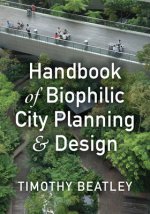
Handbook of Biophilic City Planning & Design
62.38 € -
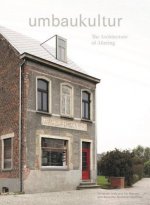
Umbaukultur
43.88 € -1 % -

Essential Light Straw Clay Construction
40.03 € -1 % -

Owner Builder's Guide to Stone Masonry
23.65 € -

100 Buildings
21.73 € -16 % -
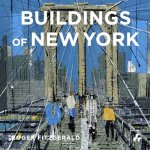
Buildings of New York
20.72 € -2 % -

Place to Call Home
57.83 € -3 % -

Prefabricated and Modular Architecture
24.06 € -15 % -

Nature by Design
40.64 € -12 % -

Chinese Architecture (Cultural China Series, Englische Ausgabe
30.83 € -5 % -
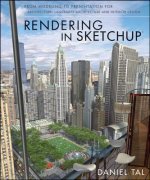
Rendering in SketchUp - From Modeling to Presentation for Architecture, Landscape Architecture and Interior Design
59.14 € -

Making Dystopia
32.55 € -15 % -

How to Date Buildings
7.47 € -15 %
Osobný odber Bratislava a 2642 dalších
Copyright ©2008-24 najlacnejsie-knihy.sk Všetky práva vyhradenéSúkromieCookies


 21 miliónov titulov
21 miliónov titulov Vrátenie do mesiaca
Vrátenie do mesiaca 02/210 210 99 (8-15.30h)
02/210 210 99 (8-15.30h)